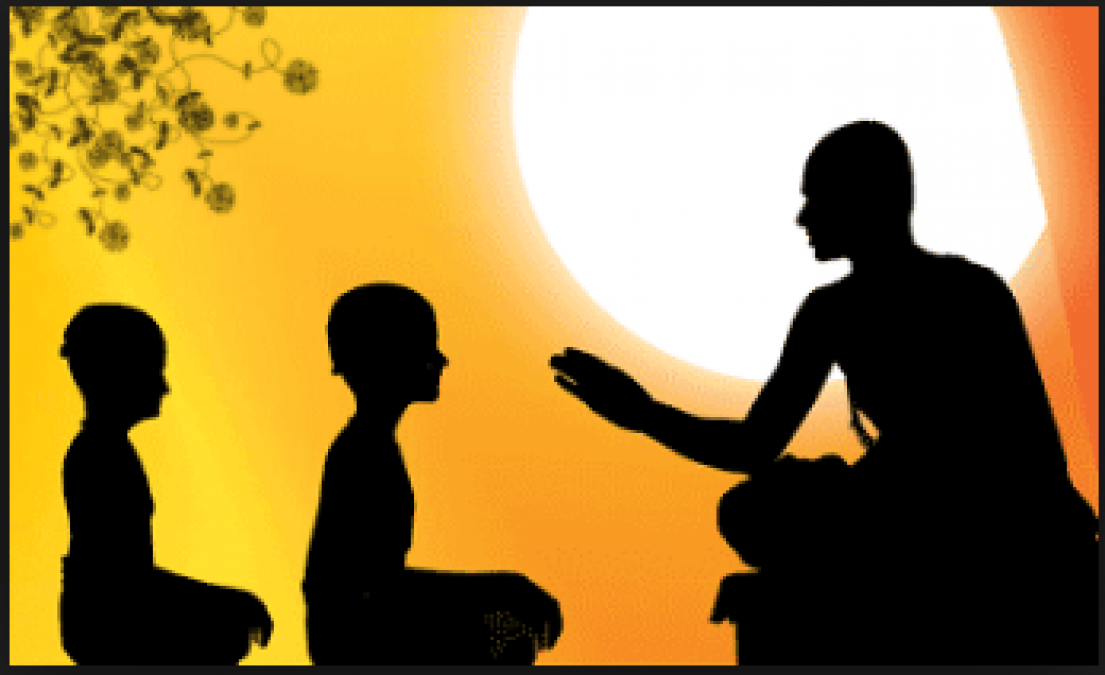
In Hinduism, human life is believed to comprise four stages. These are called "ashramas" and every person should ideally go through each of these stages:
The First Ashrama: "Brahmacharya" or the Student Stage
The Second Ashrama: "Grihastha" or the Householder Stage
The Third Ashrama: "Vanaprastha" or the Hermit Stage
The Fourth Ashrama: "Sannyasa" or the Wandering Ascetic Stage
A crucial piece of the ashrama lifecycle is its focus on dharma, the Hindu concept of moral rightness. Dharma underlies many themes in Hindu life, and in the four ashramas, dharma is learned, practiced, taught and realized.
Brahmacharya: The Celibate Student
Brahmacharya is a period of formal education lasting until around age 25, during which, the student leaves home to stay with a guru and attain both spiritual and practical knowledge. The student has two duties: to learn the skills of his life and to practice unwavering devotion to his teachers. During this period, he is called a Brahmachari as he prepares for his future profession, as well as for his family, and social and religious life ahead.
Grihastha: The Householder
This Second Ashrama begins at marriage when one must undertake the responsibility for earning a living and supporting a family. At this stage, Hindus first practice dharma, but also pursue wealth or material gratification (artha) as a necessity, and indulge in sexual pleasure (kama), under certain defined social and cosmic norms.
This ashrama lasts until around the age of 50. According to the Laws of Manu, when a person's skin wrinkles and his hair turns gray, he should leave his home and go out into the forest. However, most Hindus are so much in love with this second ashrama that the Grihastha stage lasts a lifetime!
also read “Jannah” meaning and significance in Islam that found as the final destination
Vanaprastha: The Hermit in Retreat
The Vanaprastha stage is one of gradual withdrawal. The person's duty as a householder comes to an end: He has become a grandfather, his children are grown up and have established lives of their own. At this age, he should renounce all physical, material, and sexual pleasures, retire from his social and professional life and leave his home for a forest hut where he can spend his time in prayers.
The hermit is allowed to take his spouse along with him but maintains little contact with the rest of the family. The role of the third ashrama is to be consulted as elders by the community at large, teaching dharma to those who visit. This kind of life is indeed very harsh and cruel for an aged person. No wonder, this third ashrama is now nearly obsolete.
Sannyasa: The Wandering Recluse
Ashrama 4 is one of renunciation and the realization of dharma. At this stage, a person is supposed to be totally devoted to God. He is a sannyasi, he has no home, no other attachment; he has renounced all desires, fears, hopes, duties, and responsibilities. He is virtually merged with God, all his worldly ties are broken, and his sole concern becomes attaining moksha or release from the circle of birth and death. (Suffice it to say, very few Hindus can go up to this stage of becoming a complete ascetic.) When he dies, the funeral ceremonies (Pretakarma) are performed by his heir.
also read Ramadan: History, fasting, Charity and more about it